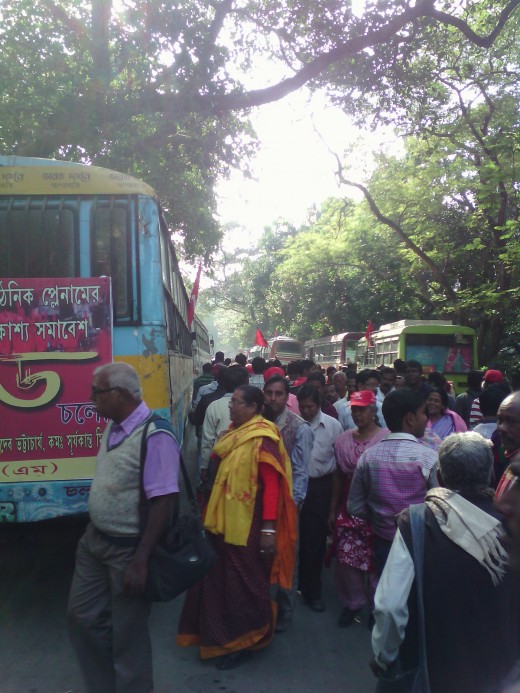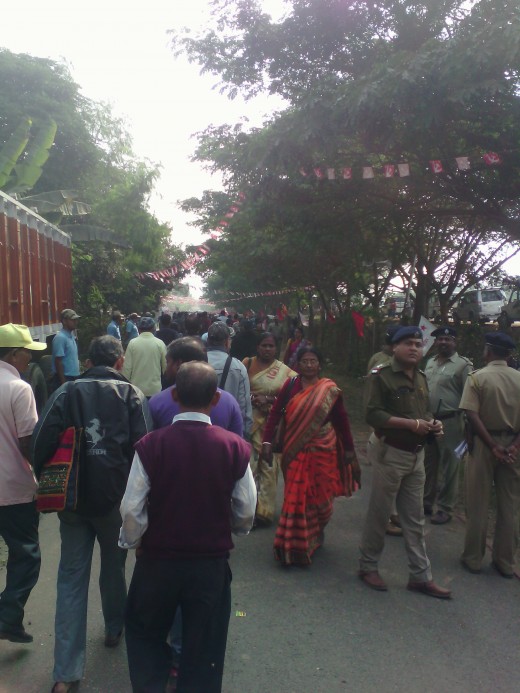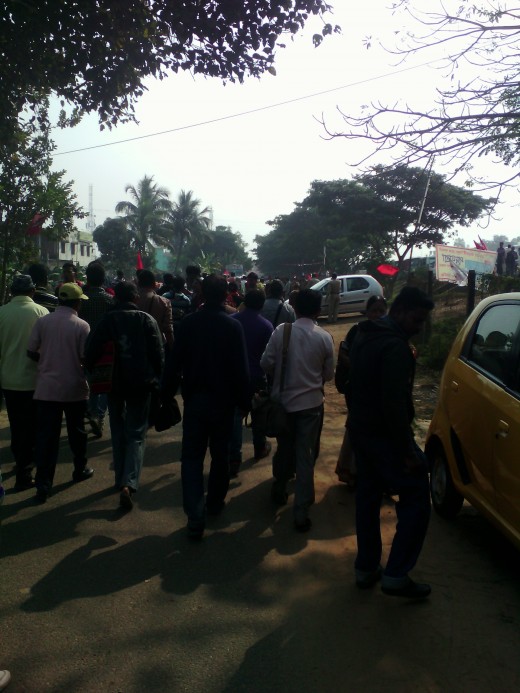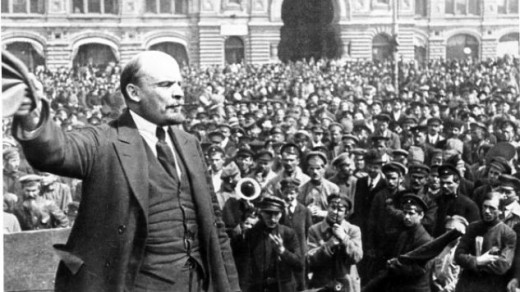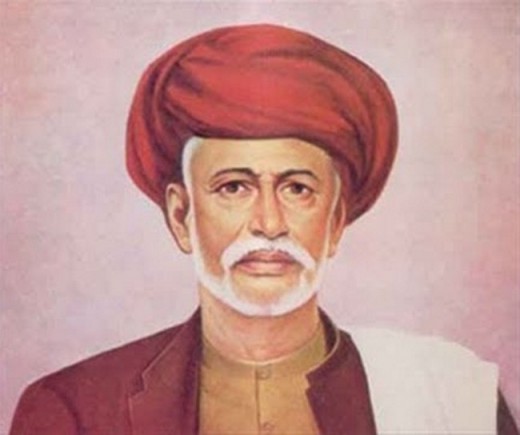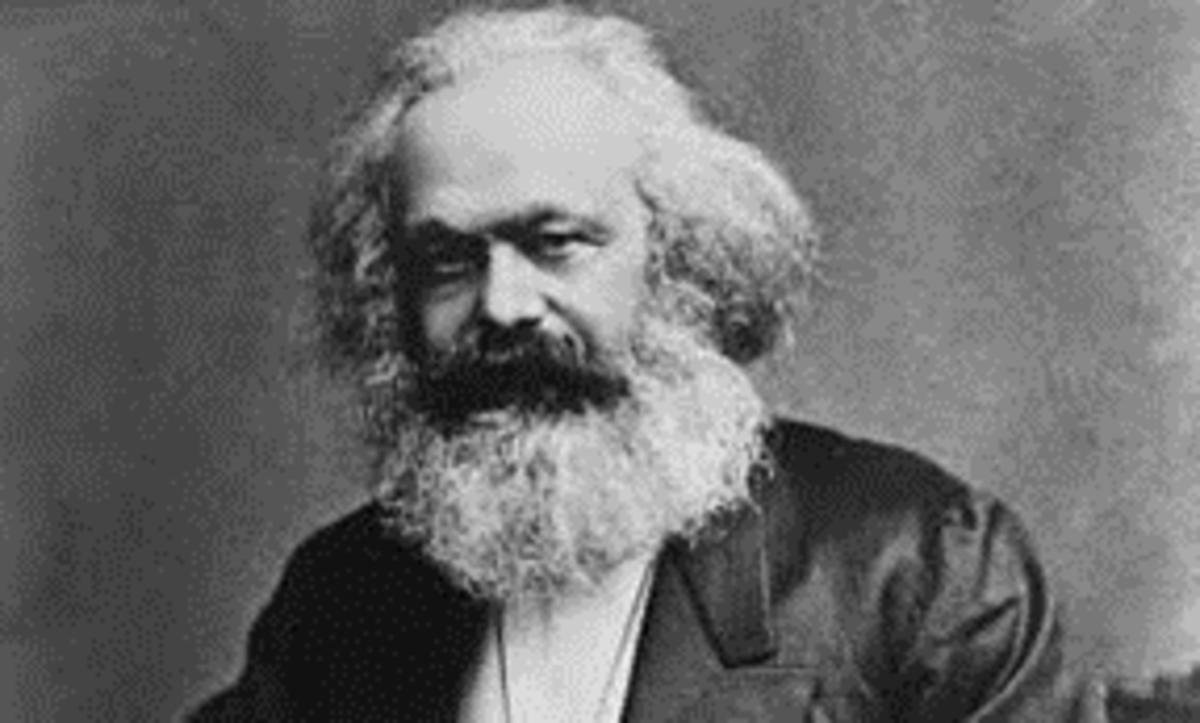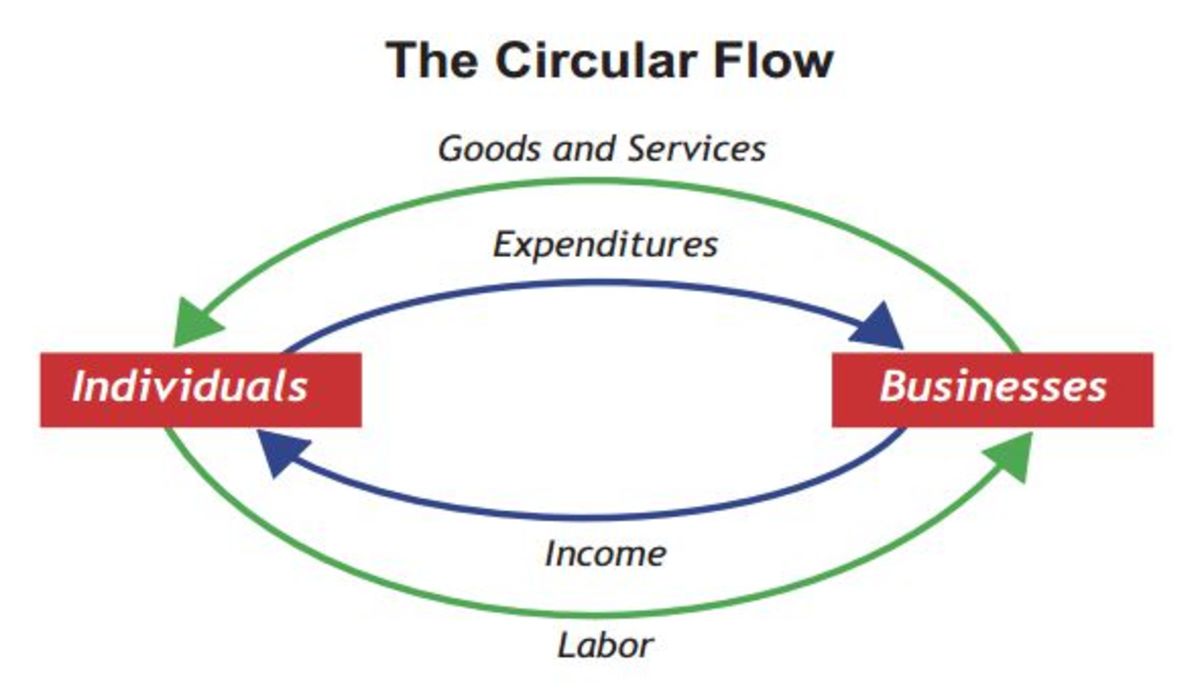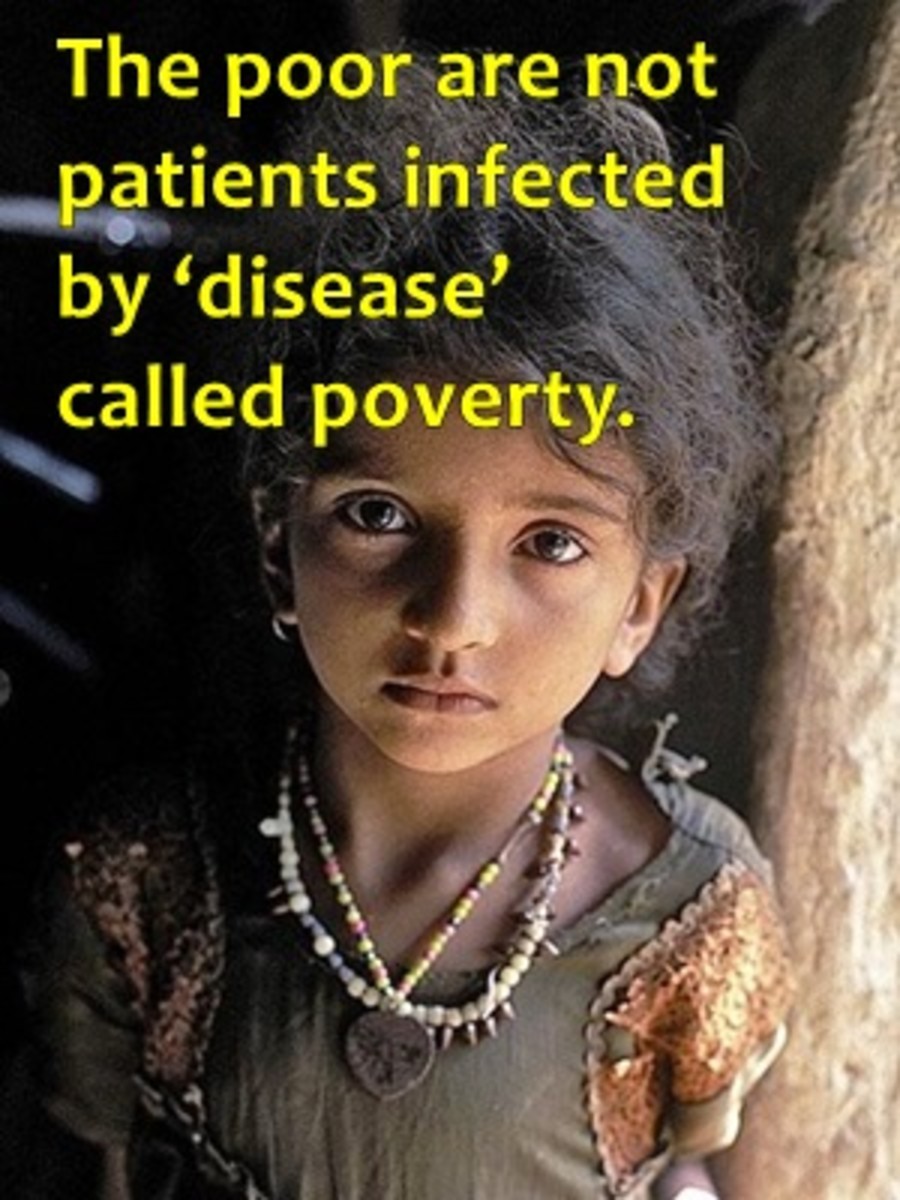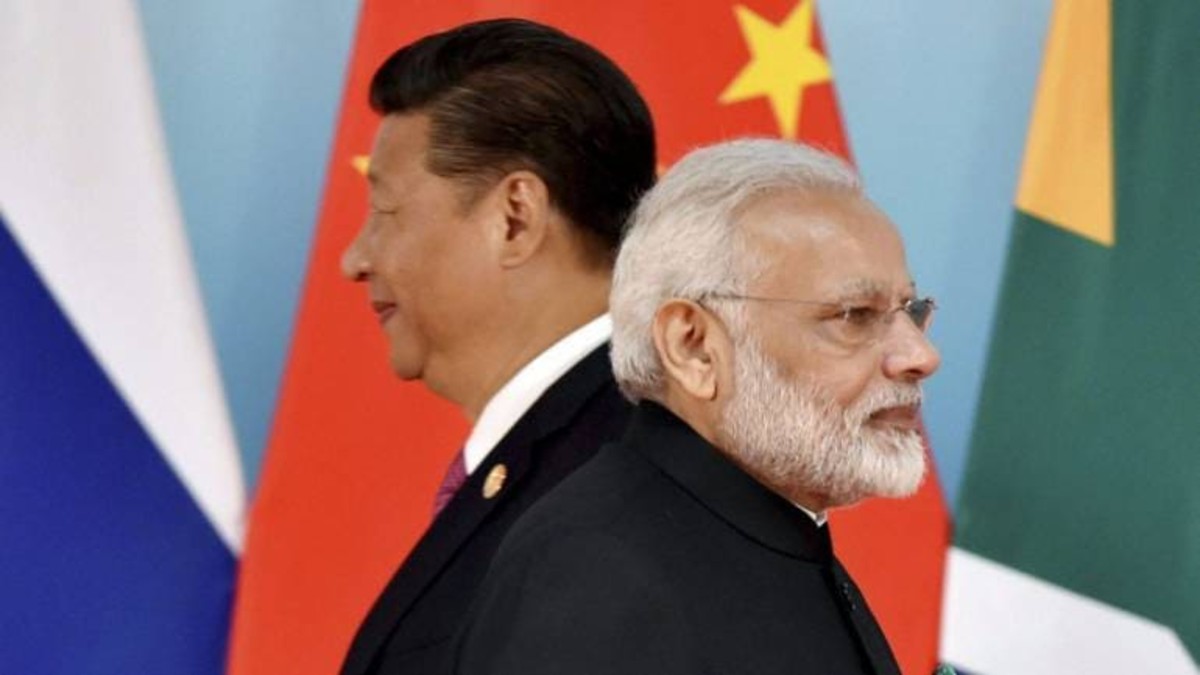Capitalism, Struggle, Property Relation in India
Brief study of Capitalism in Hustory
Today the belief has become widespread that capitalism is the only possible present and future system of economic and social organization. Even theories of 'mixed' or 'welfare' economies, or of development under state guidance and protection, which had held the ground in so much of the third wold till the other day, are regarded in influential circles as obsolete and unacceptable. 'Globalization', rather than 'independence', is the slogan most often issuing from statemen's lips; and firm revolutionaries are having to make hopefully temporary truces with indigenous and foreign capital. Even the crisis of 2008 has failed, not unsurprisingly, to shake the faith held in the portals of power in the so-called 'Washington Consensus'. There is danger, then, that to historians too capitalism may begin to seem so much the ordinary business of life that in respect to it at least, history may be deemed to have met its end. Some of us are already tempted to turn to the varied historical fashions now available in western intellectual arsenals, from the marginalist to the post-modern, and to forget the past debates about classes and exploitation.
If colonialism was one of the necessary preconditions of capitalism, imperialism was an equally necessary element of capitalism once the latter had developed. One unfortunate lacuna in much Marxist writing of this century has been caused by the ignoring of this essential fact, and the treatment of imperialism as the development only of a particular, late phase of capitalism. Much of this because of the influence exercised by Hobson's book on Imperialism (1902), written from a Free Trade Liberal's point of view. Rosa Luxemburg (1912) would define imperialism as 'the political expression of the accumulation of capital in its competitive struggle for what still remains open of the non-capitalist environment. To see imperialism as linked to capitalist accumulation generally was undoubtedly insightful, but then to restrict imperialism to a period when 'non-capitalist' territory in the world had been reduced to an 'insignificant' size was to divest it of much historical significance. Lenin introduced a different and more basic qualification. When writing in 1916, he defined imperialism as a product of the monopoly phase of capitalism.
He even went on to say : "In the most flourishing period of free competition in Great Britain, i.e. between 1840 and 1860, the leading British bourgeois politicians were opposed to colonial policy." Following this, Marxist historian, Dobb reduced imperialism to 'a preoccupation with privileged spheres of foreign trade', a feature becoming marked only in the last two decades of the nineteenth century. That there could be no inherent imperialism in the era of Free Trade was implied byDobb's aside that such preoccupation 'recalled the Mercantilism of earlier centuries'.
(Reference : Capitalism in History by Irfan Habib. Page 1, 9)
Only leftists fight against capitalism
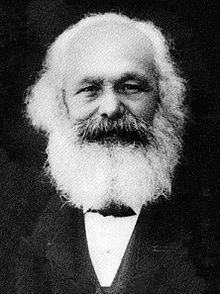
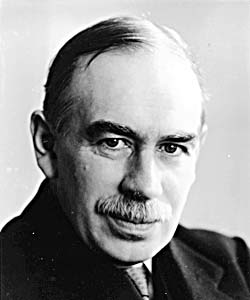
Banking and stock market
Capital accumulation which is not dealt with by Marx in Capital, because in his time the phenomenon had not been recognised. This is what is popularly termed 'money creation' by banks, classically investigated by J. M. Keynes in his Treatise on Money, 1930. Once a banking system is well established, and all earning citizens not only deposit their money in banks but cheque payments (and, now, electronic transfers) come into universal vogue, the banks obtain the capacity to increase money supply far beyond the amount that comes into their hands through their primary deposits. This is because when they lend out the money received in a primary deposits, the loaned amount too lands in a bank account, on which a bank can then make a further loan. The process of such credit creation can be infinite, subject to the size of the portion held back at each stage to sustain a safe cash-deposit ratio, and to the ability of borrowers to borrow at rates of interest considered sufficiently profitable by the banks. Such immense capacity attained by banks to finance industry and commerce is really an act of enforced saving imposed on the community at large, since money creation by banks is necessarily inflationary in its effects and must lead to a corresponding decline in the real earnings of the general population. In other words, this too creates a situation of 'underconsumption' while it increases hugely the capital in the hands of the major borrowers, the great industrial and business firms.
Marx's basic findings, we can also develop a notion of how accumulation/expropriation proceeds, through stock exchanges. Let us first consider the situation where all the buyers and sellers of stock are not only stock-holders, but deal only by selling their present stock to buy new stock. In such a case, since demand and supply would be equal, the exchange as a whole should neither rise nor fall, except for shifts in relative values of some sectors at the cost of others. If the exchange nevertheless rises, such an increase can be regarded as 'fictitious' since nothing more is happening than a gamble among capitalists themselves. But if what contributes to the rise in stock-exchange prices is an inflow of money that does not arise out of sale of previous stock, then the situation is different. Here sums of money flow in that have been earned or 'saved' in sectors of the economy outside the range of big capital. As these 'savings' flow in, the stock-exchange values go on rising, and the conversion of non-capitalist wealth into stock-capital becomes a self-sustaining phenomenon since people 'invest' more in stocks in the expectation that the exchange would continue to rise in future. Stock values on the stock exchange thus lose any recognizable relationship with capitalization on the basis of prevailing interest rates, or with the actual returns earned by the companies. In 2017, according to a newspaper report, stock values on average were about 50 times the actual annual returns in China, and about 25 times in India. In a sense the total stock value at current exchange rates may still seem to be 'fictitious' Capital, but the net inflow of money for stock purchases is not unreal. The immediate beneficiaries are, of course, the older owners of stock and the companies who now issue their shares at high premiums - essentially forming the higher echelons of the capitalist class. But what is the net result for the economy of such huge transfers of money from consumption or from non-capitalist sectors into stock capital, that in reality adds nothing to effective Capital? It must, in the final analysis, imply a corresponding amount of withdrawal from demand for consumption goods, and so we find here an additional factor for the collapse of the market, beside the decline, or slowing down of the rise, in real wages.
(Reference : Capitalism, Globalization and Crises - The Need for Fundamental Change? Shireen Moosvi. Page 166-168)
Insight of capitalism
Do you think Capitalism will continue endless time?
Jyotiba's Revolt
Jyotiba the great iconoclast democrat, the friend of the poor and oppressed, never wavered in his loyalty to the masses in giving priority to their interests. Whether it was a widow remarriage, education, liquor shops, caste exploitation, bureaucratic oppression or usury and land alienation, the economic loot of India, the building of a new market or decorations to greet a Viceroy at the expense of the people, or a dinner to a royal visitor, he defended the interests of the masses without prevarication and fears. His passion for the untouchables was unheard of and his sense of justice included every oppressed caste and he had absolutely no caste bias. He also demanded equal treatment for Muslims and Christians. No wonder the movement was originally named only as the satyashodhak movement - a movement against the untruth, injustice and hypocrisy if the Hindu social order dominated by Brahman supremecy.
S movement for equality, against caste- domination, was bound to have an anti-Brahman edge at the time, the Brahmans vmbeing the supreme caste in the Hindu hierarchy. Certain other factors added to the situation.
To understand post-independence compromise and the capitalist seeds hiding onto the system, carrying forward and growing up inequality, The Land Reforms Acts of the bourgeois landlord governments were intended only to adjust old relations to their immediate needs. Statutory landlordism was abolished but the basic structure and inequality has remained. And the Acts that were passed have also not been implemented with the surplus land legislation ending in a huge farce and land concentration increasing the Congress enactments.
Once again the full weight of the administration and class rule supports the economic structure which keeps the castes and untouchability in being. The bourgeois landlord alliance which dominates the State is incapable of doing anything else, whatever may be its pretentious claims. The miserable results of the much advertised 20-Point Programme again prove the same truth.
In this situation it is but inevitable that the masses themselves should be victims of customs, the toilers should get divided on caste-basis and forget their common bond which is being daily created. It only means that the formation of a new class of proletarians is being delayed by the retention of land system and therefore the hold of earlier hierarchical ideology continues.
The dominant class interests have after independence worked for the retention of caste inequality, untouchability and communal outlook.
(Reference : Caste, Class & Property Relation - B. T. Ranadive)
Rally against inequality in Kolkata
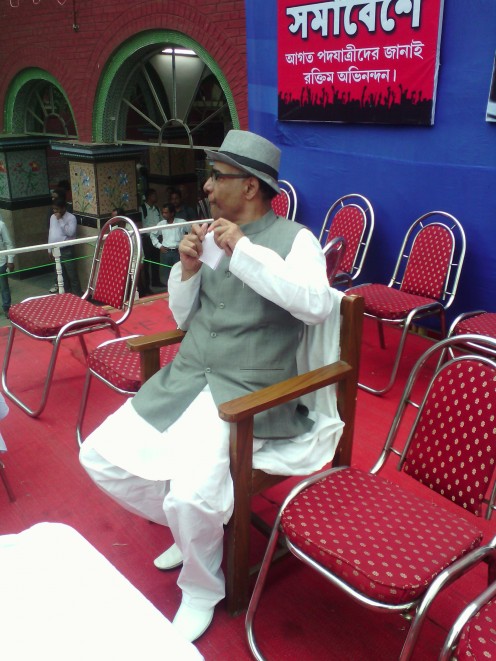
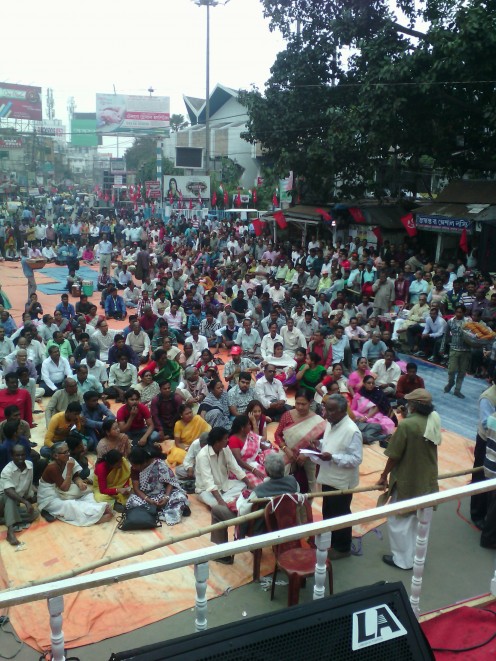

Poverty, Inequality and Human Development
It is evident that consumption inequality had increased quite sharply after the early 1990s. This has happened in both rural and urban areas in India, but more in urban areas. As for Income poverty as conventionally defined, the official estimates show a decline in the proportion of the population below poverty line. The most recent data, using comparable estimates of consumption expenditure from the National Sample Surveys of 1993-94 and 2004-05, suggest that the rural poverty ratio declined from 36 per cent to 28 per cent, while the urban poverty ratio fell from 32 per cent to 26 per cent. However, the recent decline suggests a slower rate of poverty reduction in the most recent period than in the period from the mid-1970s to 1990s. Rising inequality is clearly one major reason why India has not made more progress in reducing absolute poverty.
It is evident that the development project in India has been conspicuously lacking thus far in the sphere of ensuring equitable access to quality education. Even today, the official gross enrolment ratios for children in the age group 6 to 14 years is less than 80 per cent, and effective enrolment is much less.
This is largely because of huge under provision and poor-quality provision in the government school system, such that those who cannot afford to attend private schools are either unable or unwilling to attend school, and are often deprived of access altogether. Some of this is because of the very large infrastructure gap in the public education system in the country. There are still large numbers of villages and urban settlements without government schools in the approachable vicinity.
Health and nutrition indicators are also disturbing. The National Commission on Macroeconomics and Health (2005) has classified health conditions into three major categories, namely: communicable diseases, maternal and child health conditions; non-communicable diseases; and accidents and injuries. HIV/AIDS and tubercular and drug-resistant malaria are projected to increase.
Health-care services are now characterized by the most extreme duality, with the rich opting for deluxe institutions with 'world class' infrastructure. The poor are forced to avail of either very overcrowded public facilities, or access medical shops where they are routinely exploited and often provided with inadequate care. In all this, the concept of public health has been somehow forgotten.
There are also serious concerns arising from the information on trends in nutritional status. The National Sample Survey Rounds on consumption expenditure reveal that per capita calorie consumption, far from rising, has actually decreased, even for the poorest groups. Per capita foodgrain consumption declined from 476 grams per day in 1990 to only 418 grams per day in 2001, and even aggregate calorific consumption per capita declined from just over 2,200 calories per day in 1987-88 to around 2,150 in 1999-2000. This is confirmed by outcome indicators on nutrition, in terms of underweight children and low BMI among adults, especially women.
(Reference : Growth with Exclusion. The Indian Economy in the Phase of Globalization. Jayati Ghosh)
Macroecomic, policies
The explicit aims of the neoliberal economic reform process adopted from 1991 onwards were (i) to do away with or substantially reduce control on capacity creation, production and prices, and let market forces influence the investment and operational decisions of domestic and foreign economic agents within the domestuc tariff area; (ii) to allow international competition and therefore international relative prices to influence economic decisions; (iii) to reduce the presence of state agencies in production and trade; and (iv) to liberalize the financial sector by reducing controls on the banking system, allowing for the proliferation of financial institutions and instruments, and permitting foreign entry into the financial sector.
These measures were all based on the notion that greater freedom given to private agents and market-functioning would ensure more efficient and more dynamic outcomes. The government's aim was also to restructure production towards area of international 'comparative advantage'. These areas were seen as inherently more labour-intensive, which led to the further prediction that, after an initial brief period of net job loss, such a strategy of trade liberalization would actually create more employment over time in more sustainable way.
These aims translated into successive changes in the pattern of regulation in different sectors as well as in aggregate macroeconimic policies. By the early years of the current decade, therefore, the Indian economy had undergone the following policy changes :
- Reduction in direct state control in terms of administered prices and regulation of economic activity;
- Privatization of state assets, often in controversial circumstances;
- Rationalization and reduction of direct and indirect tax rates, which became associated with declining tax-GDP ratios;
- Attempts to reduce fiscal deficits, which usually involved cutting back on public productive investments as well as certain types of social expenditure, reducing to farmers, and increasing user charges for public services and utilities;
- Trade liberalization, involving shifts from quantitative restrictions to tariffs and typically sharp reductions in the average rate of tariff protection, as well as withdrawal of export subsidies;
- Financial liberalization, involving reductions in directed credit, freeing of interest, rate ceilings and other measures which raised the real cost of borrowing, including for the government;
- Shift to market, determined exchange rates and liberalization of current account transactions;
- Some Capital account liberalization, including easing of rules for foreign direct investment (FDI), permission for non-residents to hold domestic financial assets, easier access to foreign commercial borrowing by domestic residents to hold limited foreign assets.
The policies of the central government since the beginning of the 1990s have had direct and indirect effects on farmers' welfare. The economic reforms did not include any specific package specifically designed for agriculture. Rather, the presumption was that freeing agricultural markets and liberalizing external trade in agricultural commodities would provide price incentives leading to enhanced investment and output in that sector, while broader trade liberalization would shift the inter-sectoral terms of trade in favour of agriculture.
Distribution of Persons by General Educational Level in India
Males
| Rural
| Urban
| Year
| Females
| Rural
| Urban
| Year
| Not literate
| Literate and up to Primary
| Middle
| Secondary and above
|
|---|---|---|---|---|---|---|---|---|---|---|---|
Males
| Rural
| 1993-94
| Females
| Rural
| 1993-94
| 45.5 (41.1) | 67.9 (70.8)
| 33.7 (27.6) | 23.0 (16.8)
| 10.9 (15.4) | 5.6 (7.3)
| 9.8 (15.7) | 3.4 (5.3)
| ||
"
| "
| 1999-00
| "
| 1999-00
| 41.2 (37.2) | 61.5 (65.2)
| 34.2 (26.2) | 26.0 (17.4)
| 12.6 (17.8) | 7.5 (9.6)
| 11.7 (18.9) | 5.0 (7.7)
| |||
"
| "
| 2004-05
| "
| 2004-05
| 36.4 (32.0) | 55.0 (32.0)
| 36.1 (27.3) | 29.3 (19.9)
| 14.0 (19.1) | 8.9 (11.3)
| 13.4 (21.1) | 6.7 (10.2)
| |||
Males
| Urban
| 1993-94
| Females
| Urban
| 1993-94
| 24.1 (16.2) | 38.4 (36.3)
| 33.2 (23.3) | 31.0 (21.6)
| 14.5 (18.4) | 11.8 (14.3)
| 28.1 (41.9) | 18.7 (27.7)
| ||
Males
| "
| 1999-00
| "
| "
| 1999-00
| 21.6 (14.4) | 34.3 (31.8)
| 30.9 (19.9) | 29.9 (19.5)
| 15.6 (19.3) | 13.2 (15.7)
| 31.7 (46.4) | 22.5 (32.8)
| ||
Males
| "
| 2004-05
| "
| "
| 2004-05
| 19.3 (12.1) | 30.7 (27.9)
| 30.0 (20.2) | 29.4 (19.7)
| 16.0 (19.4) | 14.4 (16.8)
| 34.5 (48.3) | 25.5 (35.6)
|
Figures in parentheses are the corresponding proportion for persons of age 15 years and above.
Source : NSSO, 'Employment and Unemployment in India', New Delhi, 2006.
Struggle of changing the systems
Click thumbnail to view full-size




Sumup
The other result would be a mounting export of surplus capital; and this could explain the growing importance of capital exports and repatriated incomes in England, France, Germany and the USA before World War I. Capital would be exported generally to friendly capitalist countries and to one's own colonies. It would be inherent in such investment to have a political protection built around it, against competitors looking for similar investment in the same territory. Thus a still greater accentuation of intern imperialist divisions and coalitions would arise.
All the economic forces that generated imperialism in the past are still with us. The long resistance offered by the socialist countries and the post-World War II upsurge of national movements undoubtedly modified the forms and methods of imperialism, modifications that have to be constantly studied. Whether the picture would be still further altered owing to peoples' rejection of the warlike policies of the US, and of her political and economic dominance, and by a recovery of the forces of socialism, is for the future to show.

